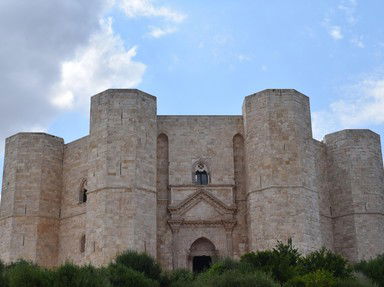Quiz Answer Key and Fun Facts
1. Chartres Cathedral in France
2. Neues Schloss (New Palace), Eremitage, Bayreuth, Germany
3. Santa Maria della Consolazione, Todi
4. Church of Saint Andrew on the Quirinal in Rome
5. Notre Dame Cathedral of Paris
6. Palazzo Carignano of Turin, Italy
7. Santa Maria della Salute or just La Salute (Saint Mary of Health) in Venice
8. Palazzo Rucellai (The Rucellai Palace) in Florence, Italy
9. Palais des Papes (Palace of the Popes)
10. Ospedale degli Innocenti (Hospital of the Innocents) in Florence
Source: Author
borimor
This quiz was reviewed by FunTrivia editor
ponycargirl before going online.
Any errors found in FunTrivia content are routinely corrected through our feedback system.
